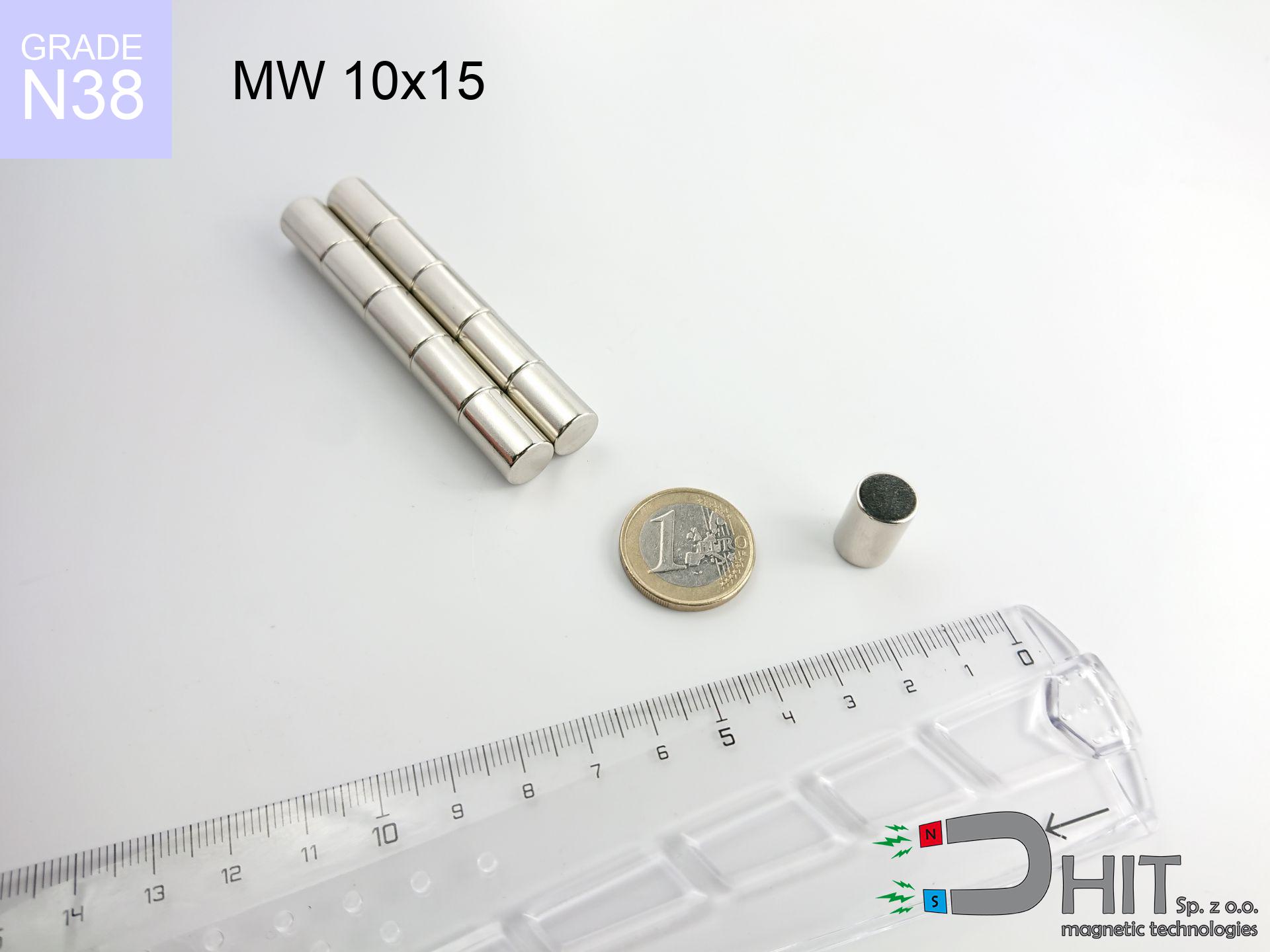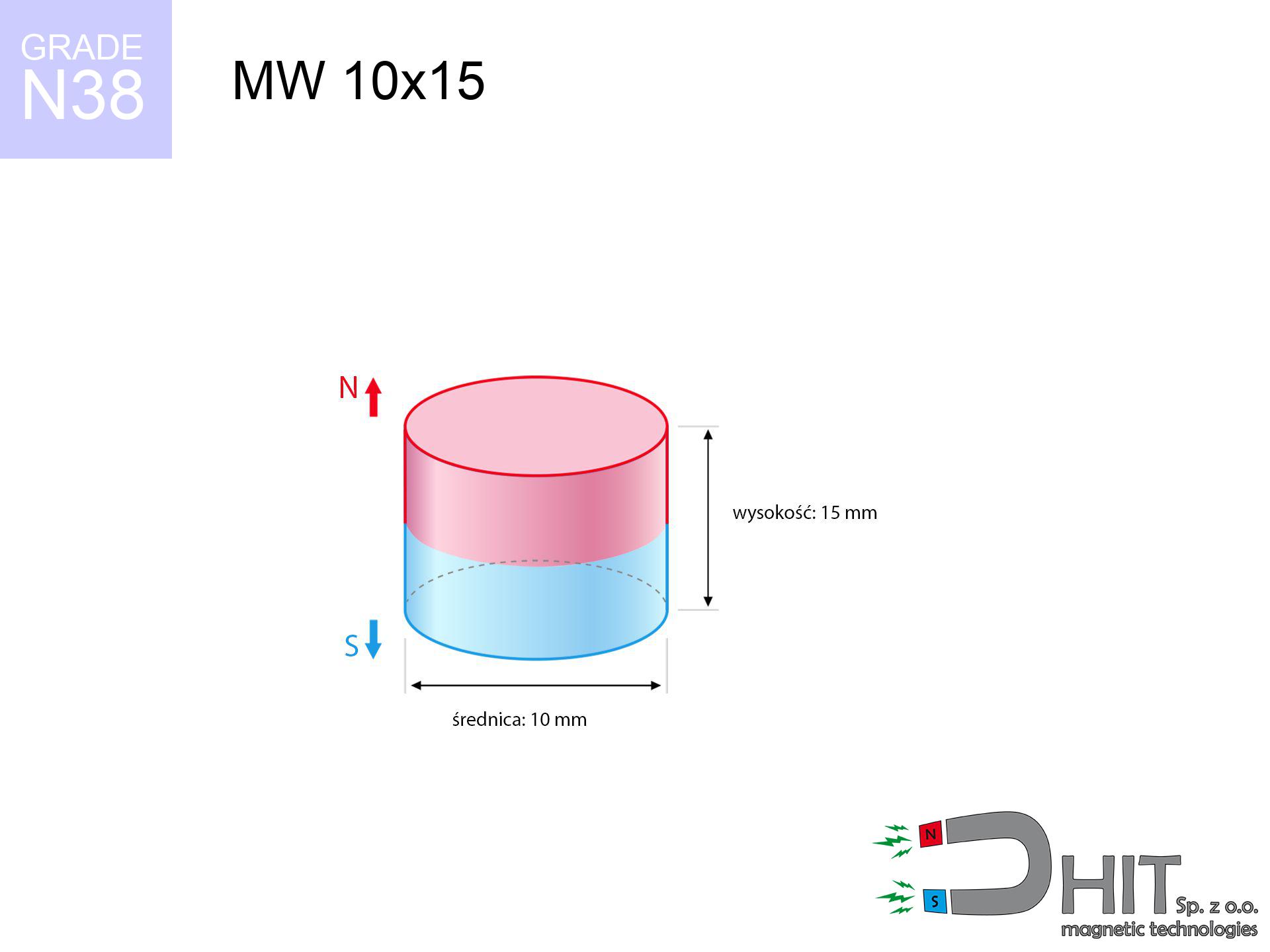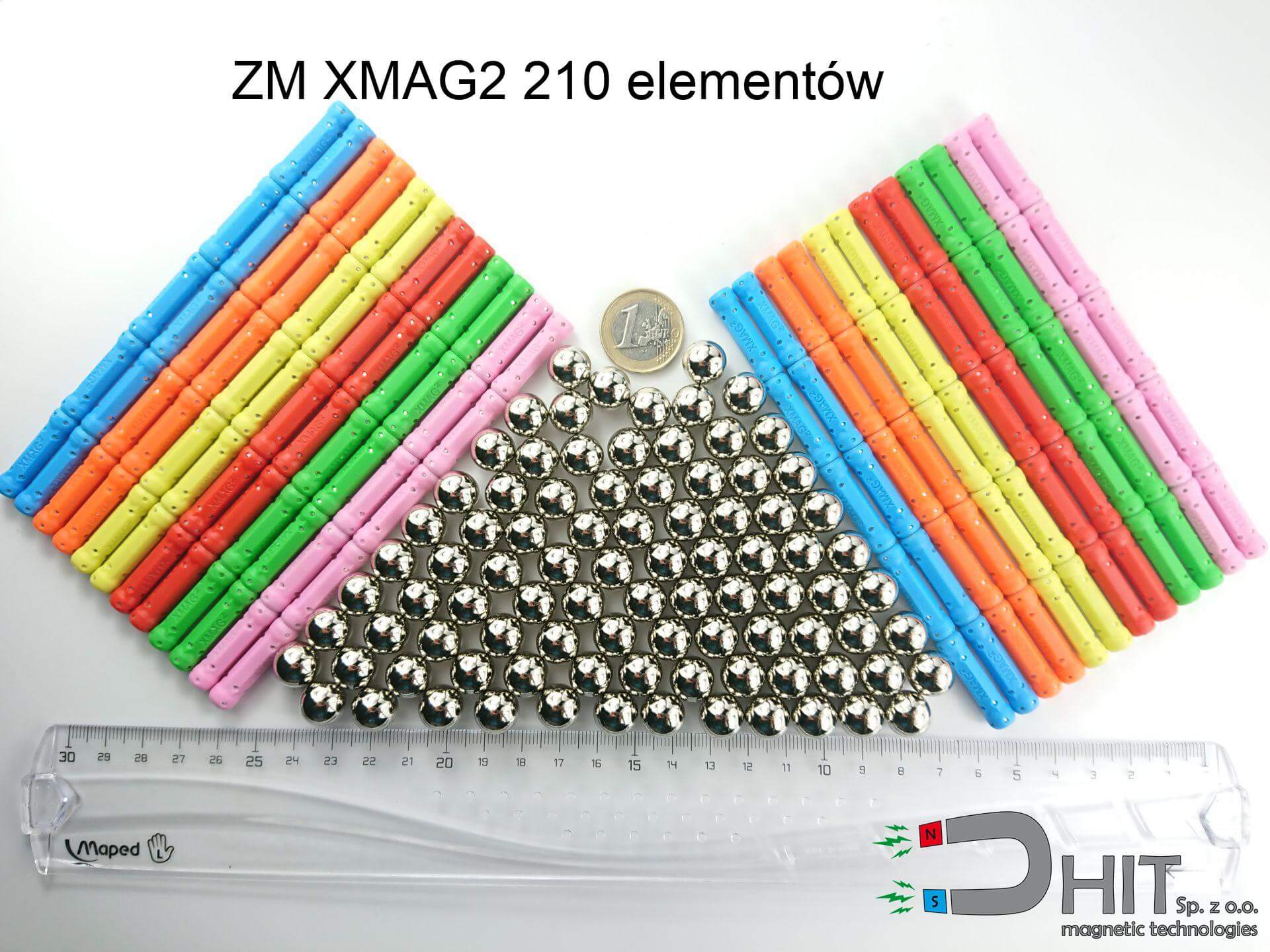MW 10x15 / N38 - neodymium magnet
cylindrical magnet
catalog number 010005
GTIN: 5906301810049
diameter Ø
10
mm [±0,1 mm]
height
15
mm [±0,1 mm]
magnetizing direction
↑ axial
capacity ~
8.29 kg / 81.30 N
magnetic induction ~
587.44 mT / 5,874 Gs
max. temperature
≤ 80
°C
catalog number 010005
GTIN: 5906301810049
diameter Ø
10 mm [±0,1 mm]
height
15 mm [±0,1 mm]
magnetizing direction
↑ axial
capacity ~
8.29 kg / 81.30 N
magnetic induction ~
587.44 mT / 5,874 Gs
max. temperature
≤ 80 °C
5.04 ZŁ gross price (including VAT) / pcs +
4.10 ZŁ net price + 23% VAT / pcs
bulk discounts:
need more quantity?Don't know what to buy?
Give us a call tel: +48 888 99 98 98 or get in touch via contact form on our website. You can check the strength and the shape of neodymium magnet in our power calculator magnetic calculator
Orders placed by 2:00 PM will be shipped on the same business day.
Specification: cylindrical magnet 10x15 / N38 ↑ axial
Magnetic properties of the material N38
Physical properties of sintered neodymium magnets Nd2Fe14B
Moreover, even though neodymium is a component of the strongest magnets, they are prone to corrosion in humid environments. For this reason, they are coated with a coating of epoxy to protect them from corrosion. It's worth noting that NdFeB neodymium magnets are about 13% lighter than SmCo magnets and, despite their power, are brittle, which requires care during their handling. For this reason, any mechanical processing should be done before they are magnetized.
In terms of safety, there are several recommendations regarding the use of these magnets. It is advisable to avoid their use in acidic, basic, organic environments or where solvents are present, and also in water or oil. Furthermore, they can damage data on magnetic cards and hard drives, although data deletion using a neodymium magnet is not guaranteed.
In terms of properties in different environments, neodymium magnets are susceptible to corrosion, especially in humid conditions. Therefore, they are often covered with coatings, such as silver, to preserve them from environmental factors and extend their lifespan. Temperatures exceeding 130°C can result in a loss of their magnetic properties, although there are particular types of neodymium magnets that can withstand temperatures up to 230°C.
As for potential dangers, it is important to avoid using neodymium magnets in acidic environments, basic conditions, organic or solvent environments, unless they are properly protected. Additionally, their use is not recommended in water, oil, or in an environment containing hydrogen, as they may forfeit their magnetic properties.
Product suggestions
Advantages and disadvantages of neodymium magnets NdFeB.
In addition to immense strength, neodymium magnets have the following advantages:
- They do not lose their strength (of the magnet). After about 10 years, their strength decreases by only ~1% (theoretically),
- They protect against demagnetization caused by external magnetic sources extremely well,
- Thanks to the shiny finish and nickel, gold, or silver coating, they have an aesthetic appearance,
- They exhibit extremely high magnetic induction on the surface of the magnet,
- Thanks to their high temperature resistance, they can operate (depending on the form) even at temperatures up to 230°C and above...
- Thanks to the flexibility in shaping and the ability to adapt to specific requirements – neodymium magnets can be produced in various forms and dimensions, which enhances their versatility in applications.
- Significant importance in modern technologies – are used in HDD drives, electric motors, medical devices and various technologically advanced devices.
Disadvantages of neodymium magnets:
- They are fragile when subjected to a strong impact. If the magnets are exposed to impacts, we recommend using magnets in a protective case. The steel housing in the form of a holder protects the magnet from impacts and at the same time increases its overall strength,
- High temperatures can reduce the power of neodymium magnets. Typically, after heating above 80°C, most of them experience a permanent reduction in strength (although it is dependent on the shape and size). To prevent this, we offer special magnets marked with the symbol [AH], which are highly resistant to high temperatures. They can operate even at temperatures up to 230°C, making them an ideal solution for applications requiring high-temperature operation,
- Magnets exposed to a humid environment can corrode. Therefore, when using them outdoors, we suggest using waterproof magnets made of rubber, plastic, or other moisture-resistant materials,
- The use of a cover or a magnetic holder is recommended due to the limited possibilities of manufacturing threads or complex shapes in the magnet
- Possible danger associated with microscopic parts of magnets can be dangerous, when accidentally ingested, which is crucial in the context of children's health. Furthermore, small elements of these magnets can hinder the diagnostic process when they are in the body.
Handle with Care: Neodymium Magnets
You should maintain neodymium magnets at a safe distance from the wallet, computer, and TV.
Strong magnetic fields emitted by neodymium magnets can damage magnetic storage media such as floppy disks, credit cards, magnetic ID cards, cassette tapes, video tapes, or other devices. In addition, they can damage televisions, VCRs, computer monitors, and CRT displays. Avoid placing neodymium magnets in close proximity to electronic devices.
Neodymium magnets are the strongest, most remarkable magnets on earth, and the surprising force between them can surprise you at first.
Read the information on our website on how to properly utilize neodymium magnets and avoid significant harm to your body and unintentional disruption to the magnets.
Neodymium magnets can become demagnetized at high temperatures.
Despite the fact that magnets have been found to maintain their efficacy up to temperatures of 80°C or 175°F, it's essential to consider that this threshold may fluctuate depending on the magnet's type, configuration, and intended usage.
Neodymium magnetic are especially fragile, which leads to their breakage.
In the event of a collision between two neodymium magnets, it can result in them getting chipped. Despite being made of metal and coated with a shiny nickel plating, they are not as hard as steel. In the case of a collision between two magnets, there can be a scattering of small sharp metal fragments in different directions. Protecting your eyes is essential.
Avoid contact with neodymium magnets if you have a nickel allergy.
Studies show a small percentage of people have allergies to certain metals, including nickel. An allergic reaction often manifests as skin redness and rash. If you have a nickel allergy, try wearing gloves or avoid direct contact with nickel-plated neodymium magnets.
Neodymium magnets should not be near people with pacemakers.
Neodymium magnets generate strong magnetic fields. As a result, they interfere with the operation of a pacemaker. This is because many of these devices are equipped with a function that deactivates the device in a magnetic field.
Neodymium magnets can attract to each other, pinch the skin, and cause significant injuries.
Magnets will attract each other within a distance of several to around 10 cm from each other. Don't put your fingers in the path of magnet attraction, as a serious injury may occur. Magnets, depending on their size, can even cut off a finger or alternatively there can be a severe pressure or even a fracture.
Keep neodymium magnets away from GPS and smartphones.
Intense magnetic fields generated by neodymium magnets interfere with compasses and magnetometers used in navigation, as well as internal compasses of smartphones and GPS devices.
Dust and powder from neodymium magnets are highly flammable.
Do not attempt to drill into neodymium magnets. Mechanical processing is also not recommended. Once crushed into fine powder or dust, this material becomes highly flammable.
Neodymium magnets should not be in the vicinity youngest children.
Neodymium magnets are not toys. You cannot allow them to become toys for children. In such a situation, surgery is necessary to remove them. In the worst case scenario, it can result in death.
To show why neodymium magnets are so dangerous, read the article - How very dangerous are very strong neodymium magnets?.






![magnetic beam 380x180x70 [4x M8] magnetic beam 380x180x70 [4x M8]](https://cdn3.dhit.pl/graphics/products/bm-380x180x70-4x-m8-wex.jpg)


